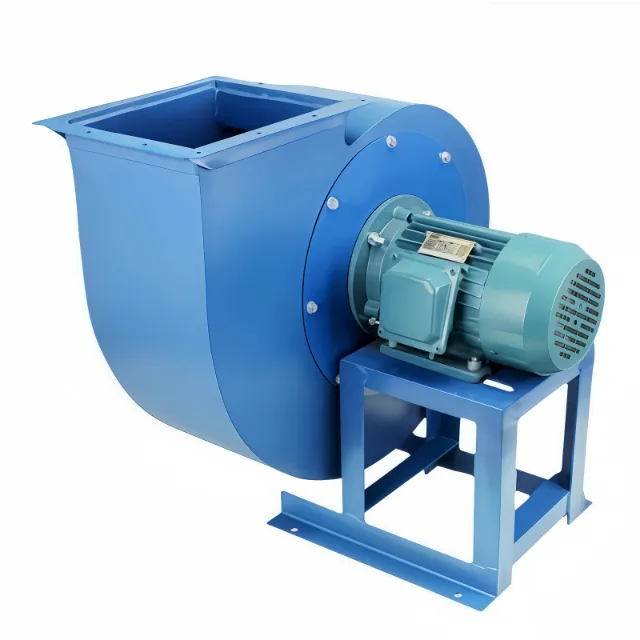Centrifugal vs Axial Fans: Which Is Better for Labs?

Introduction
Labs gotta have solid airflow to stay safe and keep experiments on track. Good ventilation clears out bad gases, keeps temps just right, and stops messes from ruining results. If airflow’s weak, you’re asking for trouble, think botched experiments or even safety risks. Two fan types run the show: centrifugal and axial. So, which one’s better for a lab’s needs? Let’s dig into what makes them different, their strengths, and why one might be the winner for lab work. Here we go!
The Basics of Fan Types
What Is a Centrifugal Fan?
Centrifugal fans shove air out in a circle, making strong, steady streams. They’re tough enough to push air through long ducts or thick filters without breaking a sweat. These fans rock in high pressure spots, staying quiet and smooth. Labs with fume hoods, cleanrooms, or dust systems lean on them hard. They’re like the reliable workhorse of fans, not fancy, just good.
What Is an Axial Fan?
Axial fans, though, zip air straight forward, kinda like a propeller on a plane. They’re great for moving tons of air fast but choke when there’s pushback, like tight ducts. They’re light, simple, and don’t use much power. You’ll spot them in basic ventilation, cooling towers, or AC setups. When you need quick air in open spaces, they’re your guy, no hassle.
Key Differences Between Centrifugal and Axial Fans
Airflow and Pressure
Centrifugal fans are pros at forcing air through tough setups. Got twisty ducts or heavy filters? They keep the flow steady, no problem. Axial fans move a bunch of air but stumble when things get tricky. They’re happiest in open areas or short ducts. For labs with complicated ventilation, centrifugal fans usually take the crown. They just handle it better.
Noise and Vibration
Labs need quiet to focus. A loud fan humming away? That’s a headache waiting to happen. Centrifugal fans run smooth and hush, thanks to their sturdy setup. Axial fans, spinning like crazy, can get loud and shaky. If you want a peaceful lab for experiments, centrifugal’s the way to go. Ever tried working with a fan buzzing in your ear? Super annoying.
Energy Efficiency
Running fans nonstop in labs costs money. Centrifugal fans might eat more power at first, but they save cash in tough systems by working smart. Axial fans sip power in easy setups but can waste it when things get complex. For labs needing constant air, centrifugal fans strike a nice balance.
Maintenance and Durability
Centrifugal fans are built like tanks. They last long, even in rough conditions, and don’t need fixing much. Maintenance is a breeze when it’s time. Axial fans are easier to swap out but need more checkups. In a lab where you can’t stop for repairs, centrifugal fans are a lifesaver. Nobody’s got time to pause experiments for fan drama.

Choosing the Right Fan for Laboratory Use
Factors to Consider
Picking a fan means thinking about a few things. First, what’s the lab like? Long ducts or thick filters point to centrifugal fans. Air quality and safety rules are huge, labs with risky gases need spot on airflow. Noise matters too, especially in quiet research or teaching spots. And energy costs? They add up fast with 24/7 fans. Every lab’s got its own vibe, so choose wisely.
Why Centrifugal Fans Are Often Preferred in Labs
Centrifugal fans get the edge in labs for a reason. They push air through tricky ducts like champs, keeping things steady. That’s critical for fume hoods or sensitive gear needing stable air. Plus, they’re quiet, which is perfect for labs where noise bugs folks. Try doing science with a fan screaming, yep, not great. Centrifugal fans bring safety, reliability, and chill vibes.
How Daiho Solutions Improve Laboratory Ventilation
Advanced Fan Technology
DAIHO Ventilation’s centrifugal fans are pretty sweet, with clever impeller designs and quiet builds. They’ve got variable speed controls and motors that save power, keeping air moving without burning cash. These perks make them awesome for labs wanting strong airflow and green cred. Saving energy while getting the job done? That’s a win.
Customized Ventilation Systems
DAIHO Ventilation makes ventilation setups that fit any lab, small or huge. From little research nooks to big pharma labs, their systems boost air while keeping energy low. This custom fit helps labs hit tough safety and air quality rules without spending a ton. It’s all about nailing the right setup.
Proven Reliability in Industrial and Laboratory Settings
DAIHO Ventilation’s gear shines in tough spots. Their centrifugal fans keep air clean and safe in pharmaceutical labs, pulling out bad gases. In college research rooms, they stay quiet while moving air steady. With a history of safety, dependability, and energy savings, DAIHO Ventilation’s a go to for labs everywhere. You know they’ve got your back.
Conclusion
Both centrifugal and axial fans have their perks. Axial fans zip air fast, great for simple jobs. But centrifugal fans rule in labs, with strong pressure, steady flow, and quiet hums. For labs needing tight control, safety, and low noise, centrifugal’s the pick. You can’t mess around with lab ventilation. Want solid options? DAIHO Ventilation’s ventilation and cooling systems are worth checking out for labs wanting better airflow and lower energy bills.
FAQ
Q: Can axial fans work in labs with complex duct systems?
A: Axial fans don’t like high resistance ducts. They struggle in tricky setups. Centrifugal fans, with their strong push, handle those systems way better.
Q: Are centrifugal fans more expensive to run?
A: They might use more juice upfront. But in tough lab setups, they save money over time compared to axial fans.
Q: How noisy are these fans in a lab setting?
A: Centrifugal fans are quieter, great for labs where noise is a pain. Axial fans, spinning fast, can get loud.
Q: What maintenance do centrifugal fans require?
A: They’re tough and don’t need much fixing. Just check motors and impellers sometimes to keep things running.
Q: Why choose DAIHO Ventilation for lab ventilation?
A: DAIHO Ventilation builds custom, energy saving centrifugal fan systems. They’re proven to keep labs safe and air clean.
